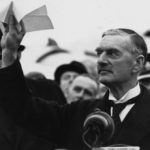Only six years after the first trans-continental railway (Canadian Pacific q.v.) was opened, Russia followed suit with her very lengthy railroad built between Moscow (actually Chelyabinsk in the Urals) and Vladivostok, a city/port in the northern Pacific. Commencement of construction was in 1891.
One of the major differences was that this railway was started from both ends at the same time, trusting in God that the tracks would eventually meet perfectly in the middle. The main Russian hope was that such a tremendous link would open up Siberia and encourage settlement there, as well as providing enthusiasm for infinitely better connections with the vast China market.
As a matter of course, strategic opportunities had not been missed either, for Russian forces in the Far East could be supplied, and her influence increased. Her ministers decided that the railway could be much shorter (and less expensive and labour-consuming) if the final selection went through Chinese Manchuria rather than over the longer Russian route following the trajectory of the Amur River. A strip of land across Manchuria was leased by Russia on which engineers could build the tracks and maintain troops. This shortening was completed by the end of 1904.
Later however, in the Russo-Japanese War of late 1904 and 1905, it was seen that the line was vulnerable to attack across Manchuria. During the Great War therefore Russia completed her Trans-Siberian Railway following the original wholly Russian route.
There is no doubt that this second great trans-continental railroad improved the Siberian economy and transformed the Russian one. By 1914 ten million people were using it regularly: its speciality was the transport of grain over immense distances, providing for example both Moscow and St. Petersburg with more than half the fresh meat eaten there. Socially too, the Trans-Siberian Railway vastly improved communications within Russia. Before the Revolution at least, hundreds of luxuriously equipped rolling stock provided the rich with never foreseen opportunities for travel and tourism.










Thank you I did not know this.